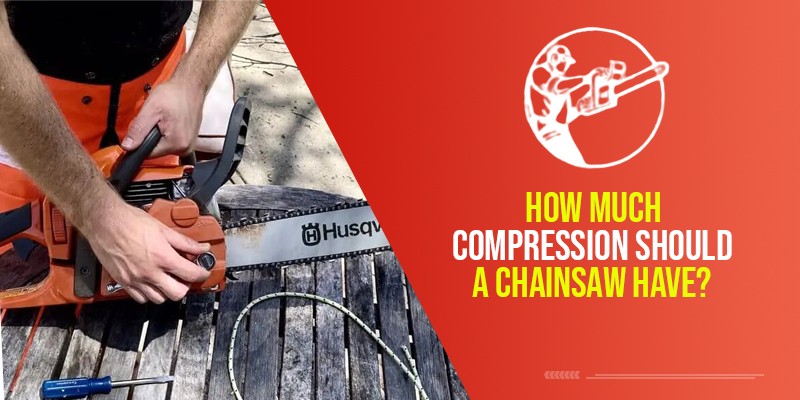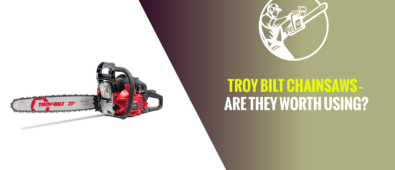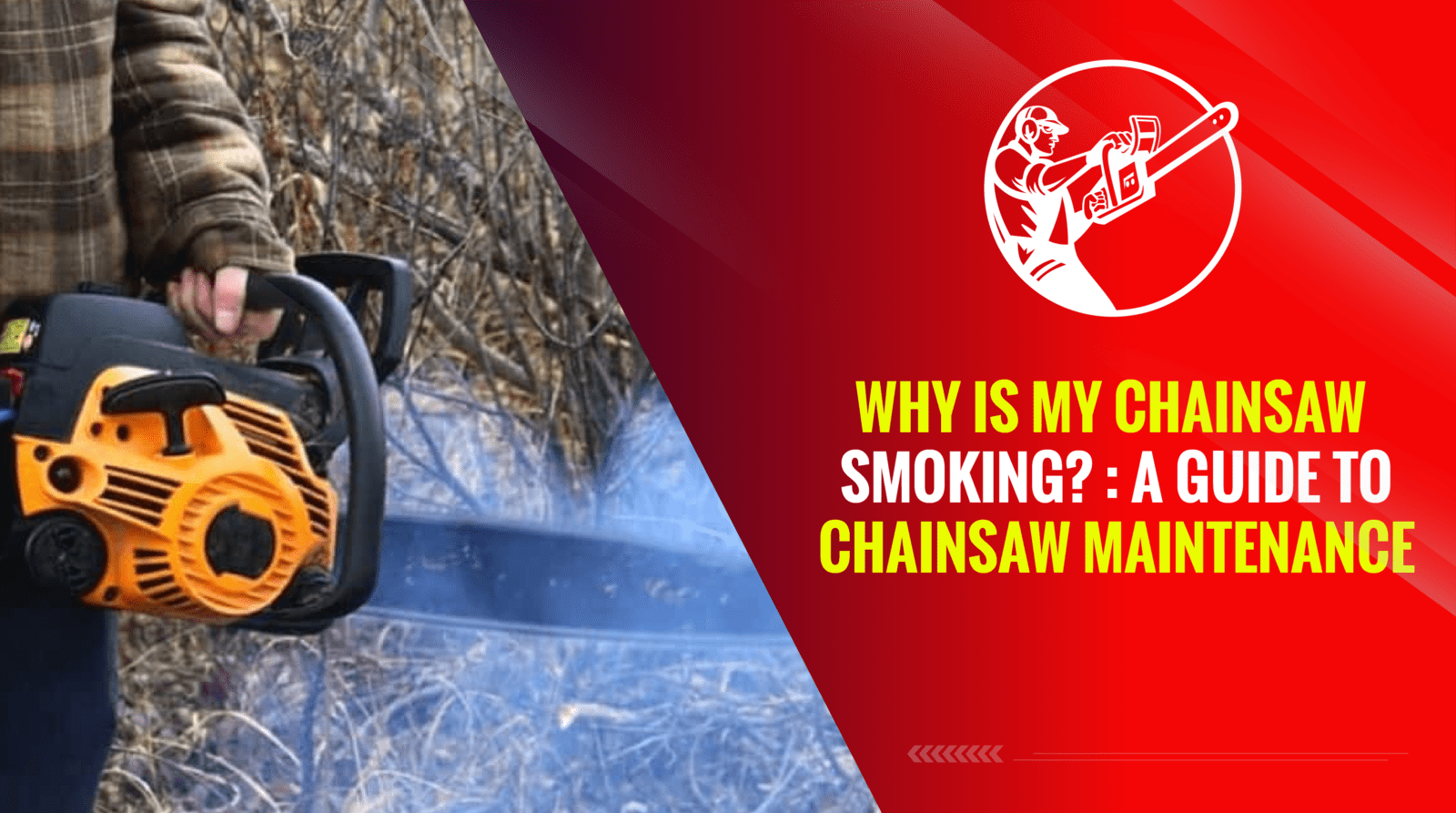Compression plays a crucial role in the performance and efficiency of a chainsaw. Understanding the ideal compression levels for your chainsaw is essential for proper operation, maintenance, and diagnosing potential issues. In this article, we will delve into the topic of chainsaw compression, explore its significance, and discuss the recommended compression levels for popular chainsaw brands such as Stihl, Husqvarna, and Poulan. Whether you’re a seasoned chainsaw user or a novice, this guide will provide valuable insights to help you achieve optimal compression for your chainsaw engine.
Understanding Chainsaw Compression
Compression refers to the pressure exerted inside the engine cylinder when the piston is at the top of its stroke. Adequate compression is vital for efficient combustion, power delivery, and overall engine performance. Insufficient compression can lead to decreased power, starting difficulties, and poor cutting performance, while excessive compression may cause engine damage or difficult starting.
One effective way to measure the compression of a chainsaw engine is by conducting a compression test using a specialized chainsaw compression tester. This tool helps determine the pressure in the cylinder and provides valuable information about the engine’s condition.
Chainsaw Compression Recommendations
Stihl Chainsaw Compression
Stihl chainsaws are renowned for their power and reliability. According to the Stihl chainsaw compression chart, the recommended compression level for a Stihl chainsaw engine is typically between 110 and 150 psi (pounds per square inch). It’s essential to consult your specific model’s manual or contact Stihl’s customer support for precise compression specifications. Read More: Best Stihl Chainsaws

Husqvarna Chainsaw Compression
Husqvarna chainsaws are known for their durability and performance. While the recommended compression levels may vary depending on the model, Husqvarna generally recommends a compression range between 100 and 130 psi for their chainsaw engines. Always refer to the owner’s manual or reach out to Husqvarna’s customer service for accurate compression guidelines.
Poulan Chainsaw Compression
Poulan chainsaws are popular among homeowners and DIY enthusiasts. The recommended compression for Poulan chainsaw engines is typically around 90 to 120 psi. However, compression specifications may differ between models, so it’s crucial to consult the manufacturer’s documentation for precise details.
Does Temperature Affect Chainsaw Compression?
Yes, the temperature can affect chainsaw compression. Compression refers to the pressure exerted inside the engine cylinder when the piston is at the top of its stroke. Changes in temperature can have an impact on the compression levels of a chainsaw engine.
In colder weather, the metal components of the engine contract, which can lead to a slight increase in compression. On the other hand, in hot weather, the metal components expand, potentially causing a slight decrease in compression.
While these temperature-induced changes in compression are usually minimal, they can still have some effect on the engine’s performance and starting characteristics. In colder conditions, the increased compression may aid in easier starting and improved power delivery, while in hotter conditions, the decreased reduction might result in slightly reduced power output.

It’s essential to note that modern chainsaws are designed to operate efficiently across a wide range of temperatures, and the impact of temperature on compression is generally not significant enough to cause major performance issues. However, regular maintenance and adherence to the manufacturer’s recommendations regarding fuel mixture ratios, oil types, and spark plug selection can help maintain optimal compression and overall performance regardless of temperature variations.
To sum up, I must say that temperature can have a minor impact on chainsaw compression, but it is not a major concern for most users. Proper maintenance, including regular compression tests and adherence to manufacturer guidelines, will ensure that your chainsaw performs reliably and efficiently under varying temperature conditions.
Problems Caused By Too Little Or Too Much Compression
Problems Caused By Too Little Compression
- Starting Difficulties: Insufficient compression can make starting the chainsaw a challenging task. The reduced pressure in the cylinder makes it harder for the fuel mixture to ignite and initiate the combustion process.
- Weak Power Output: Low compression results in incomplete combustion, leading to a decrease in power output. The chainsaw may struggle to cut through dense or thick materials, making the cutting process slower and less effective.
- Poor Idle and Acceleration: Chainsaws with low compression may exhibit unstable idle or hesitation during acceleration. The engine may struggle to maintain a steady idle speed or experience a delay in response when the throttle is applied.
- Increased Fuel Consumption: Engines with inadequate compression require more fuel to compensate for the inefficient combustion process. This can result in higher fuel consumption, reducing the chainsaw’s runtime and efficiency.
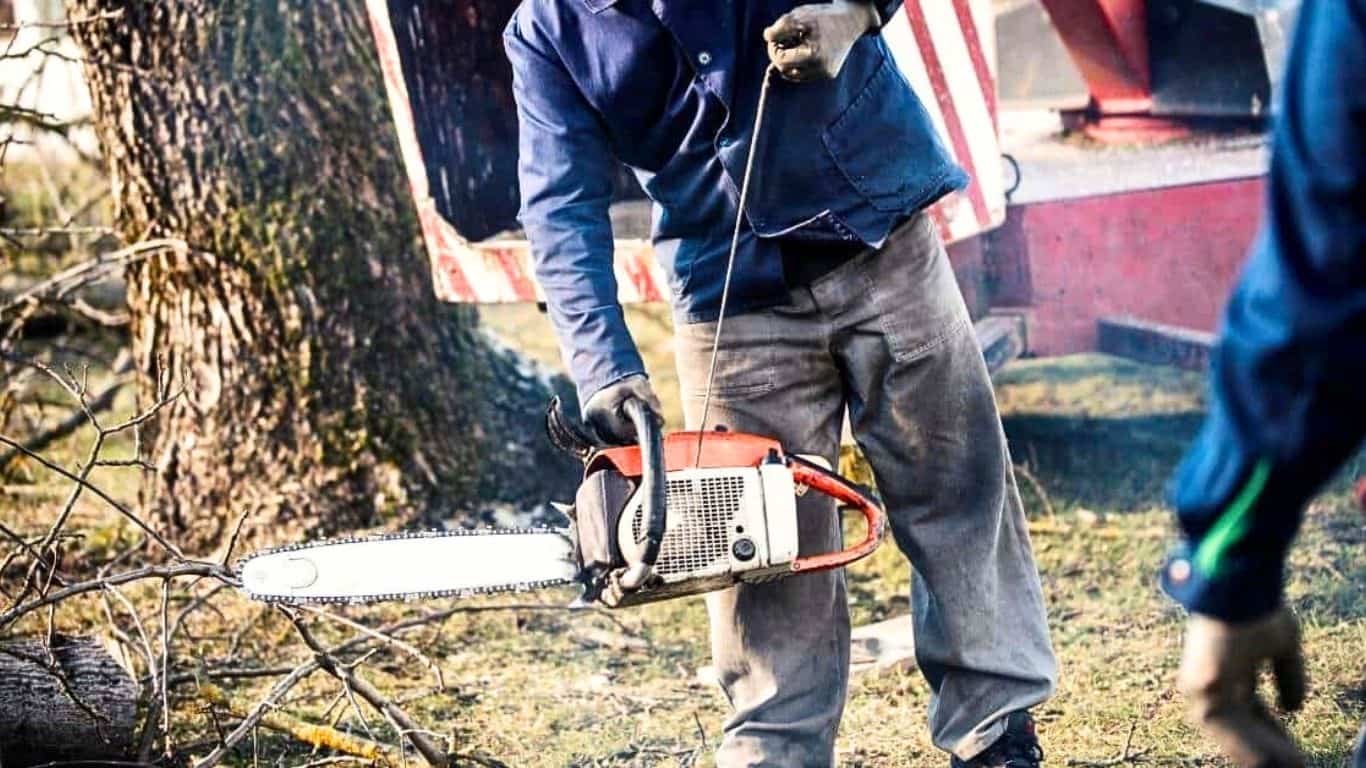
Problems Caused By Too Much Compression
- Hard Starting: Excessive compression can make it difficult to start the chainsaw. The higher pressure in the cylinder makes it challenging for the starter mechanism to turn the engine over, requiring more effort and potentially causing strain on the starter components.
- Engine Overheating: Too much compression can lead to increased heat generation inside the engine. Excessive pressure and heat can cause the engine to overheat, resulting in potential damage to the piston, cylinder, and other internal components.
- Increased Wear and Tear: The higher pressure generated by excessive compression puts additional stress on engine components, leading to accelerated wear and tear. This can result in reduced engine lifespan and the need for more frequent repairs or component replacements.
- Reduced Power and Performance: While it may seem counterintuitive, excessive compression can lead to decreased power and performance. The increased pressure can cause pre-ignition or knocking, resulting in inefficient combustion and reduced power output.
It’s important to note that both too little and too much compression can have adverse effects on a chainsaw’s performance, efficiency, and longevity. Achieving and maintaining the optimal compression level, as recommended by the manufacturer, is crucial for ensuring smooth operation, reliable starting, and optimal cutting performance. Regular compression tests and proper maintenance are essential to identify and address any compression-related issues promptly.
How Can You Perform The Chainsaw Compression Test?
Performing a chainsaw compression test is a relatively straightforward process that can provide valuable insights into the engine’s condition. Here’s a step-by-step guide on how to perform a chainsaw compression test:
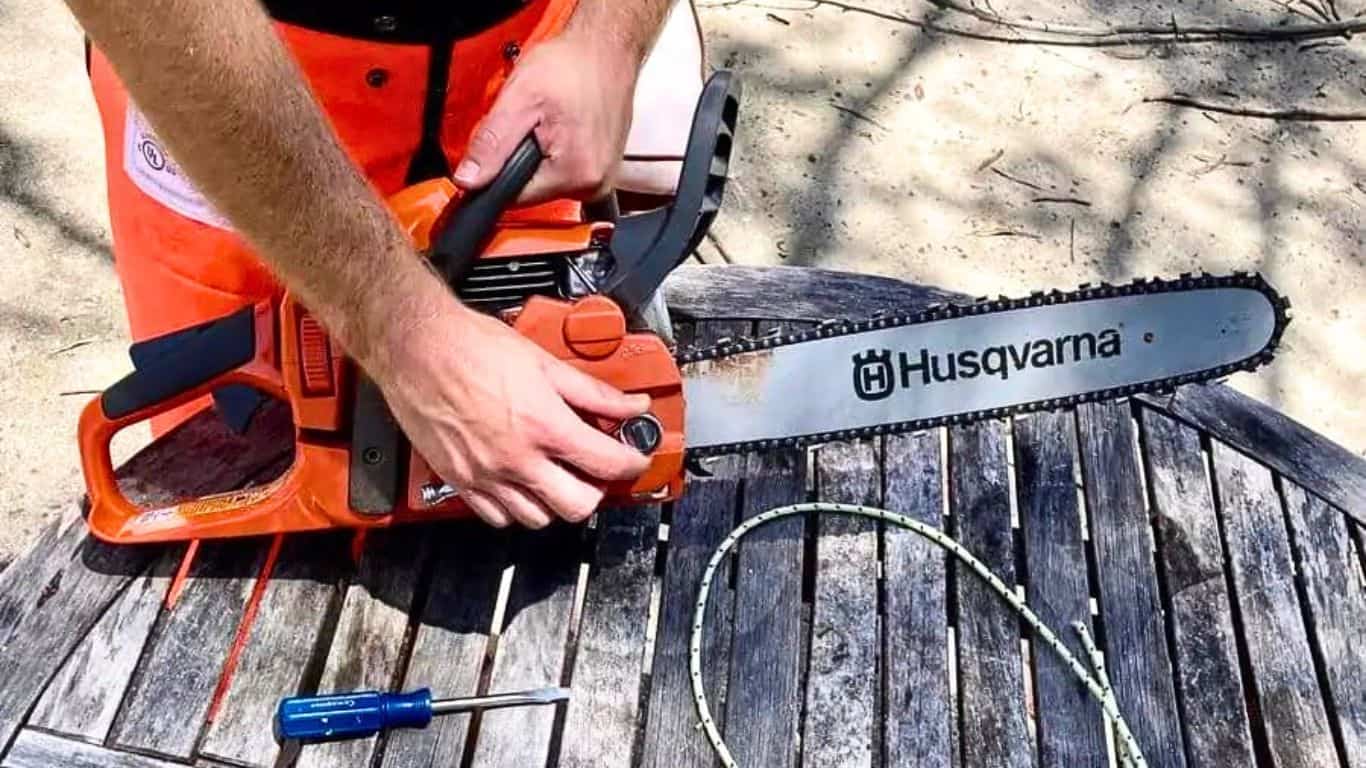
Preparation
- Ensure the chainsaw is turned off and the spark plug wire is disconnected to prevent accidental starting.
- Remove the spark plug from the engine using a spark plug wrench.
- Clean the area around the spark plug hole to prevent debris from falling into the cylinder.
Attach the Compression Tester
- Screw the compression tester into the spark plug hole by hand. Ensure it is securely tightened to form an airtight seal.
- If necessary, use a wrench to snugly tighten the compression tester, but avoid overtightening.
- Position the Chainsaw:
- Hold the chainsaw securely in a stable position, ensuring the bar and chain are away from any obstructions.
- Make sure the chainsaw is on a level surface to obtain accurate readings.
Crank the Engine
- While firmly holding the chainsaw, pull the starter rope or use the electric starter (if available) to crank the engine several times.
- Ensure that the throttle is fully open during the cranking process to allow maximum airflow.
Read the Compression
- Observe the pressure gauge on the compression tester while cranking the engine. The gauge will display the compression in psi (pounds per square inch).
- Take note of the highest reading displayed on the gauge. This represents the maximum compression achieved during the test.
Compare the Reading
- Refer to the manufacturer’s specifications or the chainsaw’s manual to determine the recommended compression range for your specific model.
- Compare the reading obtained from the test to the recommended range. If the compression falls outside the acceptable range, further inspection or troubleshooting may be required.
Repeat the Test (Optional)
- For accurate results, it is advisable to repeat the compression test two to three times and record the average reading. This helps ensure consistency and accuracy of the compression measurement.
Reassemble the Chainsaw
- Once the compression test is complete, remove the compression tester from the spark plug hole.
- Install a properly gapped and clean spark plug back into the engine, tightening it securely with a spark plug wrench.
- Reconnect the spark plug wire to the spark plug.
Performing a chainsaw compression test periodically can provide valuable information about the engine’s condition, help diagnose potential issues, and guide necessary maintenance or repairs. If you encounter abnormally low or high compression readings, it is recommended to consult a professional or the manufacturer for further guidance and assistance.
Selecting the Best Chainsaw Compression Tester
To accurately measure chainsaw compression, investing in a reliable and high-quality chainsaw compression tester is crucial. Look for testers specifically designed for 2-stroke engines, ensuring compatibility with your chainsaw. Some reputable brands to consider include OTC, Actron, and Lisle. Read reviews and seek recommendations to find the best chainsaw compression tester for your needs.

Symptoms of Low Compression in Chainsaws
Recognizing the symptoms of low compression is vital for diagnosing engine issues. Common symptoms include difficulty starting the chainsaw, weak power output, poor cutting performance, and increased fuel consumption. If you notice these signs, it’s advisable to conduct a compression test to determine the root cause.
How Much Compression Should a Chainsaw Have – FAQs
Conclusion
Achieving optimal compression in your chainsaw is essential for maintaining its performance and longevity. By conducting regular compression tests and adhering to the recommended compression levels provided by the manufacturers, you can ensure efficient combustion, reliable operation, and maximum cutting power.
Remember to consult your chainsaw’s manual and reach out to customer support for precise compression specifications, as they may vary based on the brand, model, and engine size. With proper compression, your chainsaw will continue to be a valuable tool for all your cutting needs. You can also check our article on the best Chainsaw brands.

